In today’s highly competitive app market, understanding the average user acquisition cost for apps is crucial for any developer or marketer aiming to launch a successful mobile application. This metric refers to the total cost incurred to acquire a new user, encompassing various expenses such as marketing campaigns, advertising, and promotions. As apps flood the market, knowing your user acquisition costs helps ensure your marketing budget is effectively utilized, turning potential users into loyal customers.
When calculating the average user acquisition cost, businesses must consider multiple channels. These can include:
- Social Media Advertising: Targeting specific demographics to maximize ROI.
- Search Engine Marketing: Utilizing pay-per-click (PPC) strategies to reach potential users actively searching for similar apps.
- Influencer Partnerships: Collaborating with industry influencers to tap into their audience.
Understanding these costs not only facilitates better budget allocation but also enhances strategic planning for user acquisition and retention. With insights into user behavior and preferences, companies can refine their marketing strategies and optimize their campaigns for even greater success.
To navigate the complexities of user acquisition and ensure your app stands out in the crowded marketplace, Book A Consultation Now! to learn more about effective strategies tailored to your needs.
Importance of Understanding User Acquisition Costs

Grasping the importance of understanding user acquisition costs is paramount for any app developer or marketer. As businesses strive to achieve growth and sustainability, knowing how much it costs to acquire a new user can directly influence the overall success of a mobile application. By having a clear view of these costs, companies can make informed decisions that optimize their marketing efforts and resource allocation.
One major reason to understand user acquisition costs is the ability to measure Return on Investment (ROI). If the cost to acquire users exceeds the revenue generated from them, it can lead to unsustainable business practices. This insight allows businesses to:
- Adjust Marketing Strategies: Identify which channels yield the best results and redirect funds accordingly.
- Enhance User Retention: Develop targeted campaigns that not only attract users but also keep them engaged long-term.
- Forecast Budgets: Create more accurate financial projections based on user growth expectations.
Additionally, understanding these costs allows businesses to benchmark their performance against industry standards. This comparative analysis can reveal opportunities for improvement and innovation within their user acquisition strategies, leading to more effective marketing campaigns. In a landscape where every dollar counts, having a firm grasp on user acquisition costs is essential for achieving lasting success in the mobile app market.
Factors Influencing User Acquisition Cost for Apps
Understanding the factors influencing user acquisition cost for apps is crucial for optimizing marketing strategies and maximizing return on investment. Various elements can affect how much it costs to attract a new user, and recognizing these can help developers and marketers refine their approaches.
Some of the key factors include:
- Market Competition: In highly competitive markets, the cost of advertising and acquiring users can significantly increase. Businesses may need to spend more on marketing efforts to stand out and attract users.
- Target Audience: The demographics of the intended audience can influence acquisition costs. Targeting niche markets may require tailored marketing strategies that can be costlier but potentially yield higher quality users.
- Marketing Channels: Different platforms yield varying costs. For instance, social media advertising may have different rates compared to search engine marketing or influencer collaborations. Choosing the right channels is vital for cost-efficiency.
- Seasonality: Certain times of the year may see fluctuations in user acquisition costs. For example, holiday seasons could drive up costs due to increased competition for ad space and user attention.
- App Quality and Value Proposition: The inherent appeal of the app itself can impact acquisition costs. High-quality apps with strong value propositions may naturally attract more users at a lower cost due to organic growth.
By analyzing these factors, businesses can develop more effective user acquisition strategies tailored to their specific circumstances, ultimately leading to optimized spending and healthier profit margins.
Effective Strategies to Reduce User Acquisition Costs

Reducing the average user acquisition cost for apps is essential for maximizing your marketing budget and ensuring that every dollar spent contributes to sustainable growth. Implementing effective strategies can make a notable difference in how you attract users. Here are some proven approaches:
- Optimize Your App Store Listing: A well-optimized app store page can significantly boost visibility and conversion rates. Utilize relevant keywords, compelling descriptions, and high-quality visuals to capture potential users’ attention.
- Leverage Social Media Marketing: Engage with your audience through social media platforms. Create shareable content and foster community interactions to build brand loyalty, which can reduce acquisition costs through organic reach.
- Implement Referral Programs: Encourage existing users to refer friends by offering incentives. Referral programs can create a cost-effective way to acquire new users while rewarding loyal customers.
- Utilize Retargeting Ads: Retarget users who have shown interest in your app but didn’t convert. This strategy can be more cost-effective than acquiring new users, as it focuses on individuals already familiar with your brand.
- Focus on User Retention: Improving user retention rates can lower acquisition costs over time. By enhancing user experience and providing value, satisfied users are more likely to spread the word about your app.
- Analyze and Adjust Campaigns: Use analytics tools to track the performance of your marketing campaigns. Regularly assess which strategies yield the best results and adjust your approach accordingly to enhance cost-efficiency.
By employing these strategies, businesses can work towards lowering their user acquisition costs while simultaneously enhancing their overall marketing effectiveness.
Measuring and Analyzing User Acquisition Cost

Understanding the average user acquisition cost for apps is not just about calculating the expense but also involves measuring and analyzing various metrics that contribute to this cost. This process enables businesses to make informed decisions and optimize their marketing strategies effectively. Here are some key components to consider:
- Define Key Performance Indicators (KPIs): Establish KPIs that are relevant to your user acquisition efforts. Common KPIs include cost per install (CPI), customer lifetime value (CLV), and conversion rates. These metrics will help you gauge the effectiveness of your campaigns.
- Utilize Analytics Tools: Implement analytics tools that provide insights into user behavior and acquisition costs. Platforms like Google Analytics and Firebase can help track user interactions and provide detailed reports on where your marketing budget is being spent.
- Segment Your Audience: Analyze user acquisition costs by segmenting your audience based on demographics, behavior, and engagement levels. This segmentation allows for a deeper understanding of which groups yield the highest return on investment (ROI).
- Conduct A/B Testing: Run A/B tests on your marketing campaigns to identify which strategies perform better. By testing different ad creatives, messaging, and target audiences, you can determine the most cost-effective methods for user acquisition.
- Monitor and Adjust: Continuously monitor your user acquisition costs and be ready to adjust your strategies based on performance. Regular evaluations help identify trends and areas for improvement, ensuring your marketing campaigns remain efficient.
By thoroughly measuring and analyzing user acquisition costs, businesses can gain valuable insights that lead to more effective marketing strategies and, ultimately, a lower average user acquisition cost.
Conclusion on User Acquisition Cost for Mobile Applications

In the ever-evolving landscape of mobile applications, understanding the average user acquisition cost for apps is crucial for driving success. The insights gained from measuring and analyzing user acquisition costs not only inform your marketing strategies but also equip you to maximize your app’s potential in a competitive market. By focusing on key performance indicators, utilizing robust analytics tools, and continuously testing and adjusting your campaigns, you can significantly lower acquisition costs while enhancing user engagement.
Moreover, recognizing the importance of segmentation allows for targeted marketing efforts, ensuring that your resources are allocated efficiently to attract the right audience. As the mobile app ecosystem continues to grow, keeping a close eye on user acquisition costs will be vital in achieving long-term success.
To truly harness the potential of your mobile application and optimize your user acquisition strategies, it is essential to seek professional guidance. Book A Consultation Now! and let our experts at App Wise Consultings assist you in navigating the complexities of mobile application development and marketing.
